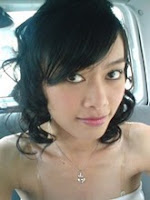 The Cat in the Hat (1957) is the first book featuring the title character. In it the Cat brings a cheerful, exotic and exuberant form of chaos to a household of two young kids, brother and sister, one rainy day while their mother leaves them unattended. The Cat performs all sorts of wacky tricks—the Cat at one point balances a teacup, some milk, a cake, three books, the Fish, a rake, a toy boat, a toy man, a red fan, and his umbrella while he's on a ball to the chagrin of the fish—to amuse the children, with mixed results. Then, the Cat gets a box from outside. Inside the box are two creatures named Thing One and Thing Two, who begin to fly kites in the house. The Cat's antics are vainly opposed by the family pet, a sapient and articulate fish. The children (Sally and her unnamed older brother, who serves as the narrator) ultimately prove exemplary latchkey children, capturing the Things with a net and bringing the Cat under control. To make up for the chaos he has caused, he cleans up the house on his way out, disappearing a second before the mother arrives. The book has been popular since its publication, and a logo featuring the Cat adorns all Dr. Seuss publications and animated films produced after The Cat in the Hat. Seuss wrote the book because he felt that there should be more entertaining and fun material for beginning readers. From a literary point of view, the book is a feat of skill, since it simultaneously maintains a strict triple meter, keeps to a tiny vocabulary, and tells an entertaining tale. Literary critics occasionally write recreational essays about the work, having fun with issues such as the absence of the mother and the psychological or symbolic characterizations of Cat, Things, and Fish. This book is written in a style common to Dr. Seuss, anapestic tetrameter (see Dr. Seuss's meters).
The Cat in the Hat (1957) is the first book featuring the title character. In it the Cat brings a cheerful, exotic and exuberant form of chaos to a household of two young kids, brother and sister, one rainy day while their mother leaves them unattended. The Cat performs all sorts of wacky tricks—the Cat at one point balances a teacup, some milk, a cake, three books, the Fish, a rake, a toy boat, a toy man, a red fan, and his umbrella while he's on a ball to the chagrin of the fish—to amuse the children, with mixed results. Then, the Cat gets a box from outside. Inside the box are two creatures named Thing One and Thing Two, who begin to fly kites in the house. The Cat's antics are vainly opposed by the family pet, a sapient and articulate fish. The children (Sally and her unnamed older brother, who serves as the narrator) ultimately prove exemplary latchkey children, capturing the Things with a net and bringing the Cat under control. To make up for the chaos he has caused, he cleans up the house on his way out, disappearing a second before the mother arrives. The book has been popular since its publication, and a logo featuring the Cat adorns all Dr. Seuss publications and animated films produced after The Cat in the Hat. Seuss wrote the book because he felt that there should be more entertaining and fun material for beginning readers. From a literary point of view, the book is a feat of skill, since it simultaneously maintains a strict triple meter, keeps to a tiny vocabulary, and tells an entertaining tale. Literary critics occasionally write recreational essays about the work, having fun with issues such as the absence of the mother and the psychological or symbolic characterizations of Cat, Things, and Fish. This book is written in a style common to Dr. Seuss, anapestic tetrameter (see Dr. Seuss's meters).
Labels: book reviews, books, Dr Seuss, The Cat in the Hat







![[01162010825.jpg]](https://blogger.googleusercontent.com/img/b/R29vZ2xl/AVvXsEjrBF3T8B26Pj1mv2r3FvA-mNvAFbL3p3TxD4saoEo6E1LYRrTyuyo0PlRx1BvxvvuFXrTMlX3RN0PCyjTCfD_3sYk-QmA6iUsj0quzfBSHHfOtJgGjaVR2R1ILXKALPKmJ3aDzJc7oyAwE/s220/01162010825.jpg)



![[butterfriend.jpg]](https://blogger.googleusercontent.com/img/b/R29vZ2xl/AVvXsEiBfUkGJfTbI5X8p5Glj34vfOSFHu6j89ou77zXUk0qcFB5_Tq_GN15uZ90-GkdtWQ_PoNgBGqOqvBwpGU3NXl1mEtIjit2uQC9i5-YsDaBJPwFpS4JArnNtBlHeGhiHMXvPorpJ0lG4mmX/s220/butterfriend.jpg)
![[Copy+of+Tekkaus-Thumbnail+new+Large.jpg]](https://blogger.googleusercontent.com/img/b/R29vZ2xl/AVvXsEhLAtCwH79xX1Bg1_KReVTcFayIuHlYH0_ms75vEv5gIjOhAS5VrQ0L1xYotL_Rlnaz5JtNH4RJeiSoB-TQMiQkKJLXZei3QZWJH-JZgFwtyjzSy-CWiPzc6Dx5e8Yc_mwKKTv2x158dklN/s220/Copy+of+Tekkaus-Thumbnail+new+Large.jpg)






